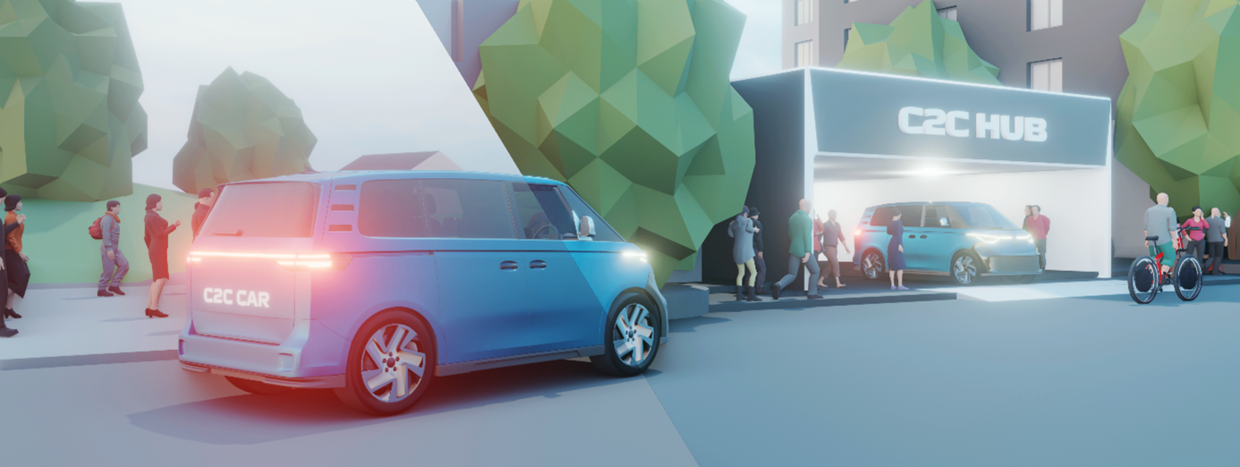
- a wide and multidimensional range of planning and operating aspects of the new mobility system
- the developement of urabn mobility hubs
- vehicle technologies for connected and autonomous on-demand shuttles
- the development of a digital tool to make the mobility system tangible using augmented reality technologies
In C2C-Bridge, technical solutions are developed hand in hand with planning concepts. Based on a comprehensive analysis of mobility behaviour, mobility needs and the existing transport system, prototypes of vehicles and mobility stations will be designed and built. The solutions developed will be evaluated from a socio-economic perspective and analysed with regard to land-use interactions. The mobility concept is developed under involvement of stakeholders (e.g., citizens, transport operators, urban planners), and under consideration of lessons learnt from surveys and virtual experience.
Our main contributions to the project are to explore citizens’ willingness-to-pay for certain characteristics of on-demand services, as well as the Value-of-Time spent in autonomous cars. Furthermore, we will conduct interviews with stakeholders involved in developing and operating existing mobility hubs to study different business models for mobility hub operations, and to derive recommendations for the implementation of C2C-Bridge hubs. Furthermore, we will assess the C2C-Bridge mobility concept’s impact on spatial accessibility and socio-economic performance.
Project partners
- Karlsruher Institut für Technologie (KIT): AIFB, ECON, FAST, IEB, IFL, IFV, IOR, IPEK, ITAS, ITI, ITIV, KASTEL und LTI
- Die Fraunhofer-Gesellschaft zur Förderung der angewandten Forschung e.V. mit den Instituten ICT, ISI, IOSB
- Forschungszentrum Informatik (FZI)
- Hochschule Karlsruhe – Technik und Wirtschaft (HKA)
- Baden-Württemberg Institut für Nachhaltige Mobilität (BWIM)
- Hochschule Pforzheim – Fakultät für Gestaltung (HSPF) (associate partner)
- Stadt Karlsruhe (associate partner)
- TechnologieRegion Karlsruhe (associate partner)
